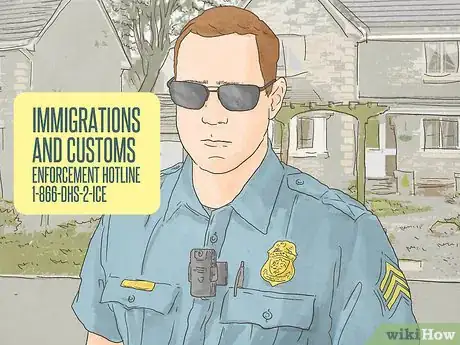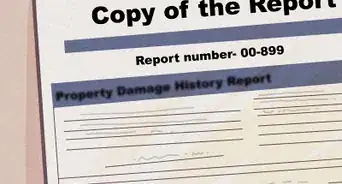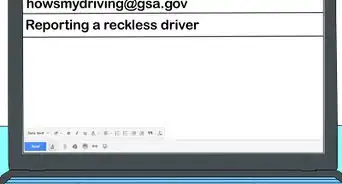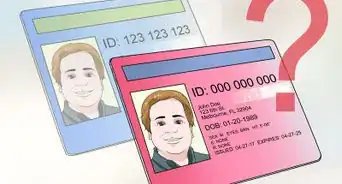This article was co-authored by Clinton M. Sandvick, JD, PhD. Clinton M. Sandvick worked as a civil litigator in California for over 7 years. He received his JD from the University of Wisconsin-Madison in 1998 and his PhD in American History from the University of Oregon in 2013.
This article has been viewed 37,279 times.
Each year, thousands of individuals and employers violate the terms of their own visas or visas they sponsored for others. These are often serious offenses which can result in civil liability, deportation, and even criminal sanctions. If you suspect the terms of a visa are being violated by an individual or an employer, reporting it is easier than ever. As long as you have access to a telephone or internet connection, you can make a report in less than 15 minutes.
Steps
Reporting a Visa Holder
-
1Gather information. Whatever the violation—whether it is overstaying a visa, obtaining a visa under false pretenses, or taking part in a sham marriage in order to obtain a green card—you will report it to Immigration and Customs Enforcement, or ICE. If you want to report a suspected violator, you should gather as much information as possible about the person you want to report and what you think they did. At a minimum, try to gather the following:[1]
- The alleged violators name and any aliases they may use.
- Their home and work addresses.
- Their exact date of birth if possible, but if not, their approximate age.
-
2Find a hotline or local office of ICE. You can give ICE a tip in one of three ways: by calling their hotline, filing a tip online, or calling a local office.
- The number for their hotline is 1-866-DHS-2-ICE.
- You can file an online tip at https://www.ice.gov/webform/hsi-tip-form.
- You can find the contact information for any of the field offices at https://www.ice.gov/contact/ero.
Advertisement -
3Submit your tip to ICE. Once you’ve decided on your preferred method of contact, submit a tip online or over the phone. Remember to be as detailed and thorough as possible when submitting your tip.[2]
- Do not submit two tips for the same incident. For instance, don’t submit a tip over the phone and then submit a tip about the same thing online.
Reporting an Employer
-
1Determine which laws the employer is violating. Employer abuse of sponsored guest workers is alarmingly widespread, but it isn’t universal, and it can take many forms. Since you’re going to want to gather evidence to support your claim (and different evidence supports different violations), you need to decide which provisions of the visa agreement your employer is violating. Some common violations include:
- Docking your paycheck to cover the visa filing fees, transportation, attorney’s fees related to the visa, or penalties for leaving employment early.[3]
- Paying you less than was agreed upon in the Labor Condition Application, or less than a similarly situated American worker.
- Withholding paystubs or other employment information.
- (For H2A workers) Not providing safe transportation or housing.[4]
- Wage theft (not paying you for the hours you worked).
-
2Start keeping records. Unfortunately, it’s usually much harder to prove an employer’s violation of the terms of a visa than it is to prove someone overstayed their visa. Most of the time, you’re going to need some kind of documentation to show the violations you’re alleging occurred.
- Different kinds of documents and records prove different kinds of violations. If you suspect wage theft, meticulously record your clock-in and clock-out times. If your employer is refusing to hand over relevant documents, record their refusals. If your transportation or housing is substandard, take pictures over a series of days.
- In addition, you’ll need the name and address of the company, the payroll schedule, the type of work you did, and the manager or owner’s name.
-
3Contact an attorney. Your employer may be civilly liable for any of the above violations. Many large corporations, including Disney and Tata, have recently been found liable for violations related to their sponsored guest workers.[5] Before you initiate a complaint, consult with an attorney to determine exactly how to proceed.
- If you cannot afford an attorney, contact Legal Aid at http://www.lsc.gov/what-legal-aid/find-legal-aid and speak with them to find a free or low cost attorney in your area.
-
4File your complaint with the Department of Labor. Even though the terms of your employment might be set by the Labor Condition Application in your visa, you report the violations to the Department of Labor’s Wage and Hour Division instead of ICE. There are many ways to initiate the complaint process, including:
- Filing a complaint online. Simply go to http://webapps.dol.gov/contactwhd/default.aspx and fill out the form using the information you gathered.
- Calling them. The Wage and Hour Hotline is open from 8 am-8 pm EST, call them at 1-866-4-USWAGE.
- Visit a local office. There are more than 200 Wage and Hour offices around the country. Find the closest one at https://www.dol.gov/whd/america2.htm.
References
- ↑ https://www.ice.gov/webform/hsi-tip-form
- ↑ https://www.ice.gov/webform/hsi-tip-form
- ↑ https://www.dol.gov/whd/FLSAEmployeeCard/H1BEnglish.pdf
- ↑ https://www.dol.gov/whd/FLSAEmployeeCard/H2AEnglish.pdf
- ↑ http://dpeaflcio.org/programs-publications/issue-fact-sheets/guest-worker-visas-the-h-1b-and-l-1/


































































